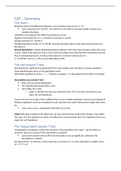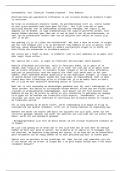Samenvatting
Samenvatting Construction and analysis of questionnaires
What is covered? - Basic of statistics - the one-sample T-test - the independent sample T-test - one-way-between-subjects analysis of variance (ANOVA) - Bivariate pearson correlation - Bivariate regression - Adding a third variable - Multiple regression analysis with 2 predictors - Du...
[Meer zien]













